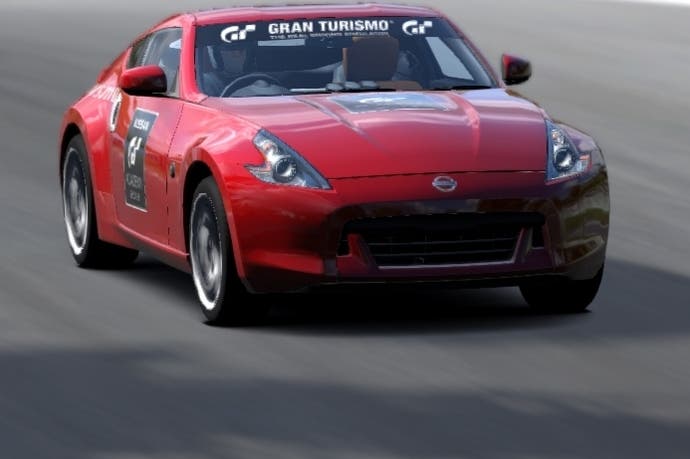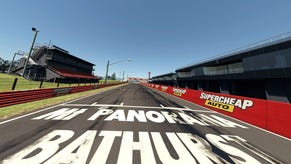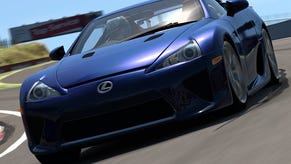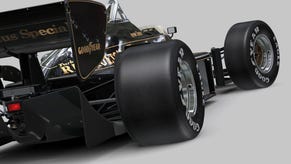Gran Turismo 6 demo vs. Gran Turismo 5
Is lower performance the price of progress?
The Last of Us. God of War: Ascension. Beyond: Two Souls. PlayStation 3 is enjoying an Indian Summer of sorts - a well-stacked line-up of first-party exclusives that sees the venerable current-gen hardware pushed to new technological heights in the months running up to the arrival of PS4. Perhaps most eagerly awaited is the arrival of November's Gran Turismo 6, the second - and almost certainly the last - PlayStation 3 game to arrive from the labs of Polyphony Digital, home to some of the most talented console developers in the world.
The arrival of a new demo this week gives us our first opportunity to put the second-gen edition of the PS3 Gran Turismo engine through its paces. Even before you hit the track, GT6 moves the series in the right direction. The prolonged loading times seen in the last game have been massively cut down, menus are easier to navigate, and the transitions between option screens are now much faster.
On the track, the changes are even more dramatic. The weight balancing and dynamics of the cars feels more accurate than before, with the use of improved suspension modelling and tyre interaction adding more subtleties to how vehicles handle when braking and turning corners - a crucial element of the new game that Eurogamer covered in more depth last week.
It's also clear from this GT Academy 2013 demo that the new game has lost none of the series' distinct feel, with Polyphony Digital focusing on moving the core Gran Turismo experience forward rather than adapting its proposition to more closely ape its rivals. But this is Digital Foundry, so for the purposes of this article we're concerned with the visual improvements to the GT technology and the associated trade-offs and compromises Polyphony has decided upon across the new game's three-year development period. In terms of the raw content of the demo, there's plenty of commonality between the demo and GT5, allowing us to mirror gameplay from one iteration of Gran Turismo to the next.
"Beautiful new lighting, advanced physics, adaptive tessellation, revised anti-aliasing and a boost to 1080p mode native resolution are the stand-out additions to the GT engine, but at what cost to performance?"
Alternative analysis:
Kazunori Yamauchi is rightly proud of the fact that Gran Turismo on PlayStation 3 is one of the few (indeed, perhaps the only) cutting-edge title to target 1080p resolution at 60 frames per second on current-gen hardware. In GT5, resolution is pegged at 1280x1080 (a 50 per cent resolution increase over standard 720p), with the implementation of quincunx anti-aliasing - a form of multi-sampling that provides improved edge-smoothing at the expense of blur.
Based on what we're seeing in the GT6 demo, resolution gets an impressive boost - up 12.5 per cent to 1440x1080 - but multi-sampling is gone, eschewed in favour of post-process MLAA. In effect, Polyphony is reallocating resources - moving anti-aliasing over to the Cell's SPUs, and giving the RSX graphics chip room to breathe, allowing for the increased definition in the core imagery plus the implementation of other new rendering features.
The bad news is that the re-balancing isn't quite as successful as we would have hoped. 1080p performance is far more variable compared to Gran Turismo 5, with smoothness visibly compromised by slowdown and judder - issues which are more prevalent when using the external chase cam and cockpit viewpoints and when transparent alpha effects (smoke and particles) are in play. Performance in the cockpit view is particularly worrying, with some regularly heavy drops in smoothness genuinely spoiling the gameplay experience when played this way.
The closest thing we have to a cure-all for these issues is to disengage 1080p resolution on the PlayStation 3 XMB and downgrade to the 720p display mode. Outside of a few dips in frame-rate caused by the appearance of alpha-based effects, GT6 manages to deliver a very solid experience in 720p, minus some occasional judder when the engine is being put under load. The use of different viewpoints has little impact on smoothness and for the most part we are looking at a mostly locked 60FPS update - cockpit view still has a hit on frame-rate, but it's nowhere near as pronounced as it is in the 1080p mode.
"V-sync eliminates screen-tear but increases judder noticeably when the engine is under load. The best solution for now is to utilise the 720p mode, which clearly possesses a much more consistent 60fps update."
Alternative analysis:
On the plus side, the tearing seen in GT5 is almost completely gone: tearing appears only in the very top line, so it's completely unnoticeable during play (and culled from our analysis video as a consequence). On the one hand, it's a very welcome enhancement to GT6 - screen-tear was noticeable and annoying in the last game. However, the flipside of this is that the fluidity of the experience is definitely compromised - if the engine fails to render a frame in time for the beginning of the display's vertical refresh, the update effectively stalls for anything up to 16ms until the screen refreshes again.
At 720p resolution, this doesn't happen quite so often but in 1080p mode, it happens a lot, resulting in very noticeable, distracting judder. In our video performance comparisons, we should also point out that GT5 is handling 16 cars up against GT6's six - and in many cases, it's clearly the increased car count that causes the drop in frame-rate in the older game. We can't help but wonder how much further the performance gap would widen if both games were handling the same number of vehicles on-screen at any given point.
So the question is, why are we seeing such a noticeable difference in performance between the two games? Surely we should be seeing improved performance from the sequel? Could it be that Polyphony is simply reaching too high in targeting a 60FPS standard while supporting 1080p with all the new features it wishes to add to its core technology? A closer look at the graphical make-up of the game is very revealing in this regard, particularly in terms of the game's lighting set-up and improvements to the computationally expensive shadow and particle systems.
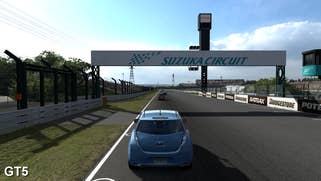
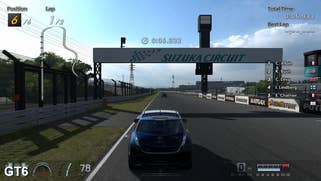
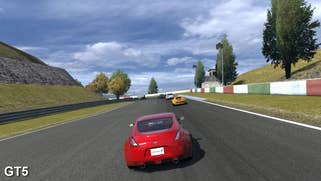
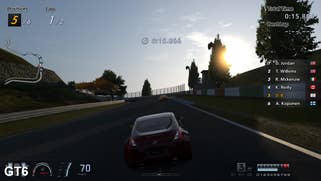
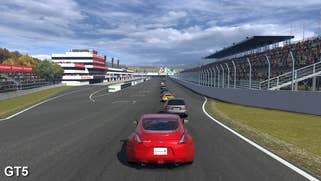
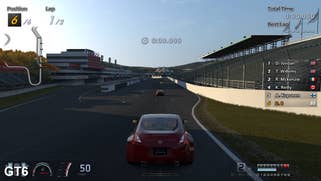

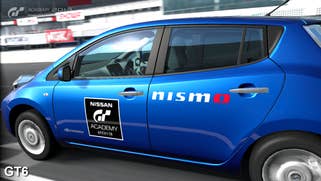
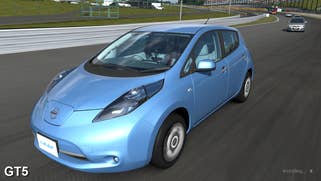
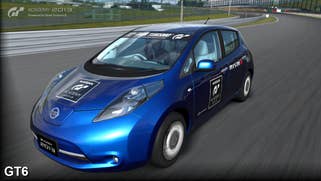
In the past, the Gran Turismo games have mostly used pre-computed (or "baked") lighting extensively in order to save on GPU resources while still convincingly illuminating scenes without a huge hit in terms of performance. The idea is that some careful artwork choices and use of dynamic light maps can provide photo-realistic visuals at a much lower cost than by rendering all of these elements on the fly.
For GT6, Polyphony has instead adopted a new lighting model, one that sees far more real-time elements being rendered - in this case designed to help facilitate time of day changes and fluctuating weather conditions during races. There were hints of this in certain GT5 tracks, but the tech has been expanded and some of the less impressive elements - such as the low-res dynamic shadows - have seen marked improvement.
While time of day and dynamic weather elements are not in the demo, the upgrades made to the lighting model are definitely implemented in the sampler, transforming the look of the game: the courses are more accurately lit and shaded than in GT5, with a combination of increased shadow coverage and extra light sources bringing more depth and vibrancy to the tracks in the game compared to previous GT titles.
There are other improvements too. Shadows cast by the cars both inside the cockpit and on the exterior appear much smoother and more rounded, lacking the harsh, jagged edges found in GT5. Smoke and particles no longer create unsightly artifacts quite so often when they overlap over surrounding geometry, motion blur is rendered in higher precision than before, and depth of field is used more often during the replays.
In many ways GT6 is shaping up to look more refined and polished than its predecessor, with the combination of improved visual effects and shaders and more realistic lighting delivering a more atmospheric experience. This is particularly noticeable on the older tracks - such as Autumn Ring - which seemingly present much less of their original PlayStation 1 heritage as a result, despite the level of detail and texture work remaining largely identical to GT5.
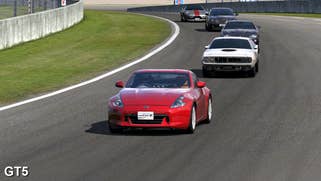
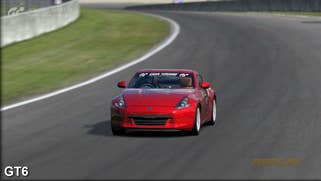

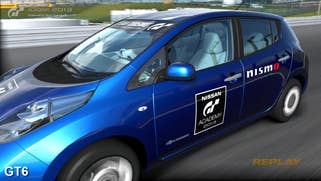


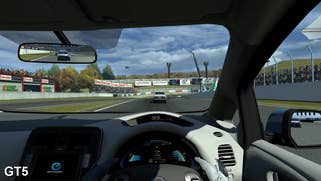
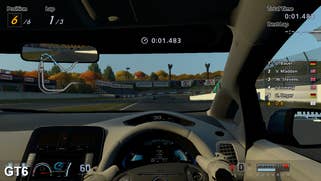
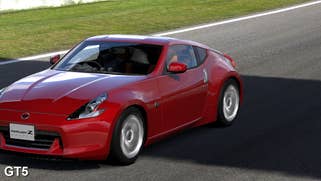
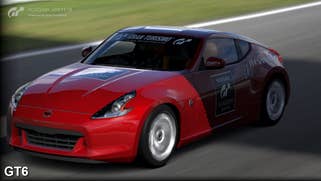


However, these changes do come at a cost to the core rendering set-up in other areas. The use of real-time shadows and higher-resolution alpha effects requires a significant increase in pixel fill-rate and memory bandwidth - two things which are in relatively limited supply on the PS3. And as such we find that Polyphony has tinkered with various parts of the game's graphical make-up in order to claw back some of the deficit from other areas.
While the car counts and lack of spectators haven't been confirmed for the final game - they could simply be artistic choices specifically chosen for the events of the demo - the fact these elements have been changed while performance has slipped is still telling. The most obvious downgrade - in the demo code at least - is that there are now only six cars in each race (compared to 16 in GT5) and the spectators have been removed entirely, leaving the some of the trackside scenery feeling a bit more sparse.
More fundamentally, there are also some noticeable alterations to the framebuffer set-up, which has a clear impact on overall image quality for the game. In addition to the quincunx AA utilised in GT5's 1080p mode, the 720p presentation utilised ultra-clean 4x MSAA multisampling to provide a quite superb presentation. However, in the GT6 demo the use of MSAA has been dropped entirely in both display modes in favour of post-process MLAA, with all the pixel-popping artifacts the technology inevitably generates in addition to its primary purpose - edge-smoothing.
The knock-on effect is that many edges do not receive as much coverage as before, and as a result there is visibly more shimmering on finer detailed structures and in areas with certain lighting conditions - such as inside the cockpit view of a car. The use of what's known as "alpha-to-coverage" on the foliage also stands out that much more in high-contrast areas, producing an unwelcome stippled screen-door effect due to the lack of blending which normally helps to hide these artifacts.
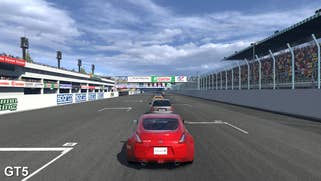
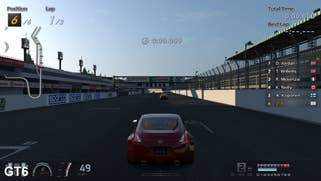
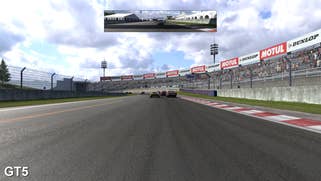
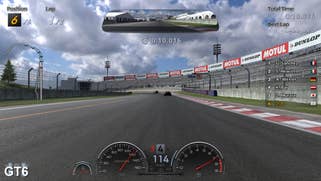

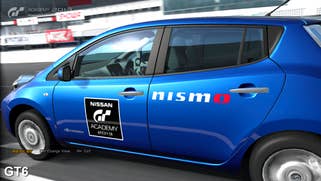
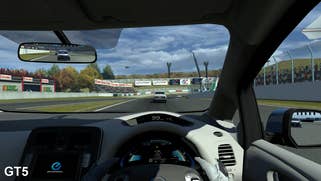
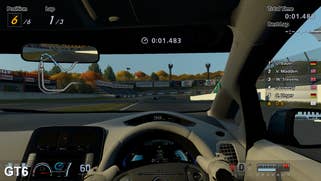
From what we've seen so far, some of the key changes in the GT6 demo reflect a balancing act between enhancing Gran Turismo's graphical feature-set while attempting to sustain that gold standard in frame-rate. Arguably some of the choices here are less welcome than others: the drop in image quality has some unpleasant side effects, while 1080p performance is currently looking far more troubling to sustain than in Gran Turismo 5, although as a result of these trade-offs we clearly have a more dynamic and vibrant-looking game.
The big question is, of course, whether Polyphony can further refine and optimise the current code to extract more from the PlayStation 3 hardware. On the one hand, some might suggest that drawing too many conclusions from demo code of an unfinished game is not such a good idea and that the sampler is not representative of the final release. On the other hand, we're mere months away from the release of the game after a three-year gestation, so there's not much time left for the level of optimisation required to equalise 1080p performance, in particular. We can also perhaps draw parallels between Gran Turismo 5 Prologue and the eventual release of the full game almost three years later - additional rendering features were added in that 35-month period, but there was no revelatory increase in performance brought about by aggressive optimisation.
Right now, the best balance between visual gains and steady performance clearly rests with the GT6 demo running at 720p. While image quality might take a hit compared to the game running in its "full HD" mode, the additional level of consistency in the gameplay experience - both in terms of frame-rate and controller response - is well worth the trade-off. So even in the here and now, the option is there for something approaching a locked 60fps experience. Hopefully we'll have better news to report on 1080p gameplay performance when Gran Turismo 6 is released later this year.
